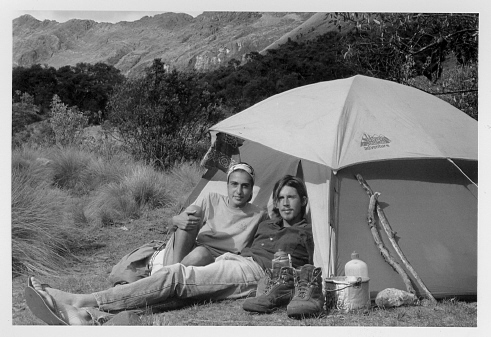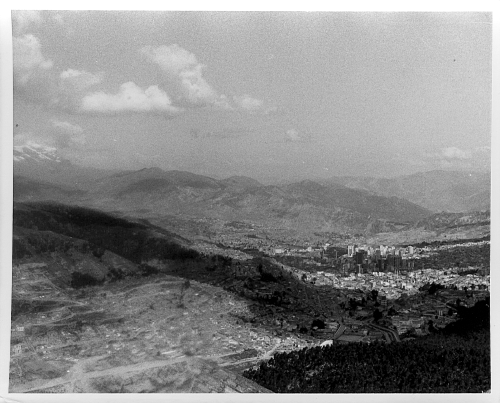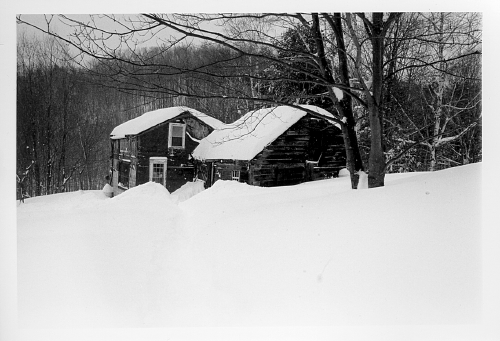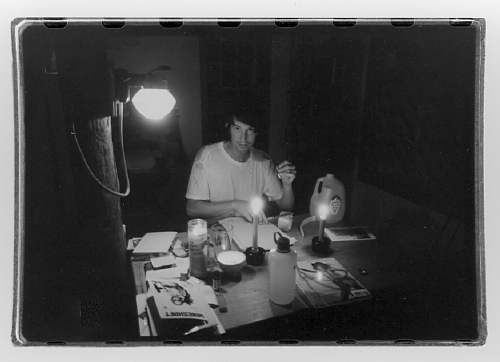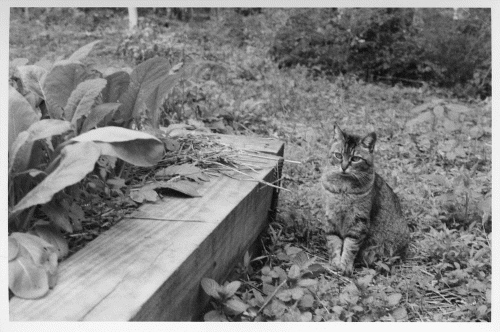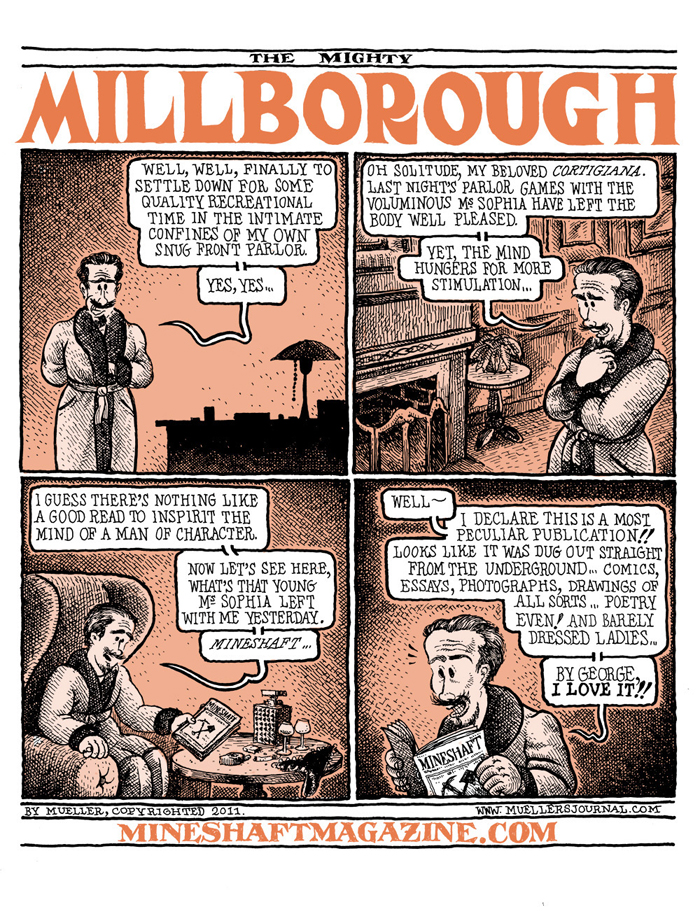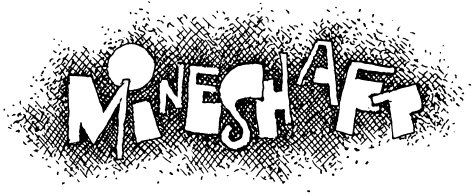
I asked Everett where he first had the idea for starting a magazine. He told me the idea came to him when he was staying at River Huts, a place run by an excellent Thai chef and her husband who was from Hawaii. Everett had a small thatched roof bungalow that overlooked the Mekong River. I was traveling in India at the time. This was the fall of 1997 and in 1998 to begin the new year, Everett and I met up in Bangkok and traveled south to Penang, Malaysia. Everett decided to return to the west coast of the U.S. and pick up our old two door Subaru that we had left with his cousins in Oregon. That same year in the summer he and I drove the car back to the east coast where we decided to live in Vermont. Through some friends that we met while working at the Common Ground Co-op Restaurant in Brattleboro we ended up renting the “Cook Shack”, a 15 foot by 15 foot well insulated cabin with a big woodstove, no electricity or running water, that was the oldest remaining building of a commune that existed on the property in the 1960’s.
It was in Vermont that Everett said to me that he would like to start a magazine. I asked him what the name should be and he said that he had liked “Mineshaft”. This was the name translated into English of our favorite bar in La Paz, Bolivia where we had lived in the early ‘90s. El Socovan was on a side street a few blocks from the university. The entrance was a red door that opened onto stairs leading into a basement. The owner supported the arts and there was always a band or performance group, and art covering the walls. A bowl of coca leaves sat on the end of the bar.
I worked at the Brattleboro Public Library at the time and used the computers there to type in the magazine. I also rented space in a comfortable old darkroom on Elliott Street, a short walk from the library. I developed all of the photos for the magazine here. Everett would often wait for me in the studio area with the big couch and few chairs. The woman I rented from let us keep a T.V. and VCR machine in the closet and we often watched old movies in the evening.
I asked Everett why he wanted to begin a magazine. He said that he had accumulated some great art that no one would publish, so he thought that he would publish it. He had been inspired by his friendship with Irving Stettner, the creator of Stroker, a small magazine that published Henry Miller, Paul Bowles, Tommy Trantino, Albert Cossery, Seymour Krim, and other artists who we highly regarded. Irving ran his operation on a shoe string. He began Stroker in 1974, at the age of 52 and was still publishing it regularly when he died in 2004.
When Everett wrote to Irving asking him for advice about how to put together a magazine and if he would contribute, Irving responded with artwork, writing, and a detailed step by step guide to putting a magazine together by hand. He also gave us the address of his printer in New York which we used for Mineshaft #1 and #3. Mineshaft #1 came out in early 1999, on orange cover paper with an Irving Stettner drawing on it, and contents by myself and our friends. I remember driving home with boxes that came in the mail in the back seat. Everett couldn’t wait and opened the boxes while I drove. I heard him shout in dismay as the printer had used the wrong cover paper – a slick white. When the printer heard of the mistake, he re-sent the 350 copies on the orange paper, and we recycled the others. Believe it or not we have copies of this small print run available still!
The cook shack was a forty minute drive half on dirt roads uphill from Brattleboro. The last mile was a bumped and rutted route past our mail box and a beaver pond to a big field called Johnson Pasture where we lived facing the field which contained a large garden. We didn’t make much money and our car eventually went to the junk yard, so we shared a car with our neighbors, Perry and Greg where we also got our water by pumping from a hand pump in front of Greg’s house. I would also hitchhike back and forth from the library starting early so I could get the few people heading into the town to work. I learned to fix gas lights, water irrigation, and phone lines. Our phone was located off a spliced line that sat inside a chicken coop.
I worked on the photo cover for Mineshaft #2 of the alleyway near where Everett lived in Bangkok before and after his stay on the Mekong River. The issue sold few copies and we had a couple of subscribers. Everett’s dad and then a good friend of ours contributed some funds and we continued to work on issue #3. At this time we came in contact with Tommy Trantino through Irving Stettner. Tommy was at that time serving a life sentence in New Jersey. He wasn’t able to receive any printed matter, but we didn’t know this and for some unexplained reason, Tommy received a copy of Mineshaft #2 that we sent to him in his jail cell. We began a correspondence that became a friendship and Tommy’s art was on the cover of Mineshaft #3. Through Irving we came into contact with many poets and published a number of them in the early issues of Mineshaft. In Mineshaft #4, John Martin gave us permission to publish one of Everett’s favorite poems, Charles Bukowski’s “Tragedy of the Leaves” along with “The Day Bukowski Died” by Everett.
Around this time one evening Everett and I rented the movie “Crumb” and watched it in the darkroom studio. We didn’t know much about Crumb’s artwork beforehand, but we were fascinated by his story and his amazing comics and drawings. Everett wrote to him asking him if he would contribute to Mineshaft. A few months later Everett and I were taking our usual mile walk to the mailbox that was at the end of the road and there in the box was a hand lettered envelope containing photocopies of 18 sketchbook drawings and a letter from R. Crumb!
Mineshaft #5 has our first R. Crumb front cover along with Everett’s lettering. We didn’t think computer type would look good, but didn’t know anyone to letter the cover, so Everett did it himself. R. Crumb’s response to this was a letter containing a number of Mineshaft logos big and small which we have been using ever since. After Crumb began to contribute to the magazine, we started to explore the huge interesting world of underground comics. First we used the library’s inter-library loan for large collections like the Complete Crumb, American Splendor and histories of the underground comics. Later we discovered Don Donahue and his Apex Novelties and began to buy the old comics themselves. Both Everett and I related to many of the old underground comics artists views of the world, their cynicism and way out open mindedness. Everett began to contact some of these artists and we were surprised at the generous response to contributing. The pages of Mineshaft began to contain work by Robert Armstrong, B.N. Duncan, Mary Fleener, Bill Griffith, Frank Stack, Aline Kominsky Crumb, Jay Lynch, and Kim and Simon Deitch.
By Mineshaft #7 in fall of 2001, I decided to avoid another winter in the cook shack and took a plane to Santiago, Chile where I traveled by bus and boat around to Tierra del Fuego and north to Buenos Aires. I decided while traveling that it was time to move south. When I returned in March we put together Mineshaft #8 and then I left by train for Lewisburg, West Virginia. Everett and I had visited Lewisburg the year before and I had been attracted by the town’s old buildings and the rugged mountains and countryside nearby. I stayed with a friend for a couple of weeks and found an old 1800’s log cabin right in town which I rented. Then Everett, myself, and our cat, Gemma, drove south.
In Lewisburg we began corresponding with Kim Deitch and published some of his amazing work. I discovered through Kim the world of authors Max Brand and E.D.E.N. Southworth among others. Kim was always exploring and discovering fantastic things. Everett and I published Mineshaft #9 though #13 in West Virginia. Here we first published poems by Billy Childish who would later do the cover to Mineshaft #20. We used our old printer who was in Massachusetts. We continued to paste up the magazine by hand. The printer would then shoot negatives, make plates, and use offset press to print the magazine. We knew our time was limited using this process, but were determined to continue as long as we could.
Lewisburg wasn’t the warm weather and sunshine I had hoped for and our log cabin was so hard to heat with the wood stove that the second winter a pipe broke in the living room and the water froze as it hit the brick floor! That spring Everett and I decided to return to North Carolina near to where we had lived in 1996. We were out of debt from working steadily at restaurant jobs and had a decent car again, so we drove further south to Durham, North Carolina where we have been living since then.
After about a year in Durham, we finally found an excellent printer. Printing Mineshaft had been a continual struggle. Our project was labor intensive for the printers we used and the process of pasting up the magazine by hand and having negative plates shot was becoming harder to find. The man who was talented at this process retired from the press we used and the quality of the printing had become uneven. One night we were walking up our street and saw a neighbor who we knew out walking his dog. We got on the subject of printers and he suggested that we use Grass Roots Press in Raleigh who he had worked with for years. We drove to Raleigh and showed them Mineshaft. Gary and Miriam who own and run the press were willing to print it using the old way with plates. Mineshaft #16, with a cover designed by Robert Armstrong, was the first we did with them. We were impressed with the quality and attention to detail. It was after Mineshaft #18 with Simon Deitch’s front cover that we switched over to a digital layout of the magazine. Miriam had gone to have some of the negative plates re-shot and found the man who did the work packing all of his equipment up in a truck. He was going out of business! I began with PageMaker and now use In Design and Photoshop to layout the magazine. The change hasn’t been a bad one though sometimes I miss gluing the art work and text with rubber cement onto paper.
Lately I’ve been writing about the trials of the magazine and the amazing people we’ve met in recent issues of Mineshaft. I won’t go into this right here, but I’ll say that Mineshaft is more than just a small magazine for Everett and I. It’s a community that keeps growing and has connected us to many great artists who have opened our minds and our readers’ minds to great new and old things. Mineshaft wouldn’t be around without all of its contributors, as well as its subscribers and readers around the world. The magazine has been and continues to be a wonderful vehicle of connection and self expression.
